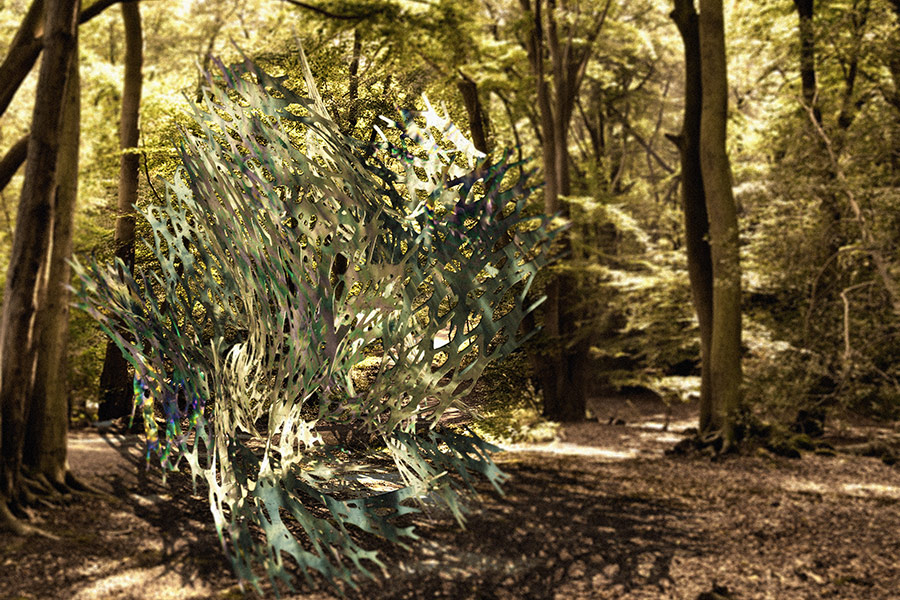
Web Extra: Check out a gallery of the four winning installations on the AN Blog.
Once a quarry, then a landfill, the property at Circle Acres Nature Preserve in the Montopolis neighborhood of Austin was purchased by Ecology Action of Texas with the goal of transforming the site into a nature preserve and park. The Field Constructs Design Competition and the resulting exhibition activated and drew attention to this newly-established nature preserve through temporary installations that further “the capacity for public art and design to attract interest and attention to a part of the city that may otherwise be perceived as peripheral, remote, or underutilized.”
Each proposal explores site-specificity, environmental impact, and new technologies in design and fabrication. The jury was composed of experts in interdisciplinary and interventional practice in architecture, landscape architecture, and art. The competition received 82 entries, trimmed to 18 jury-selection finalists, and then reduced to the four winning entries, which were on display as part of an exhibition from November 14–22.
Blurred Bodies is a product of Studio Roland Snooks, located in Melbourne, Australia. Snooks explores algorithmic design and computation in his work and is director of the Architectural Robotics Lab at RMIT University. Using computational modeling of swarming agents, Snooks constructed a material net that was be fabricated from polished steel. The nebulous, perforated installation is meant to question the difference between the synthetic and the natural, becoming at once something other and something camouflaged.
99 White Balloons is the product of Cambridge-based INVIVIA, a cross-disciplinary practice led by architect Brad Cantrell and architect and designer Allen Sayegh. Their proposal is a series of floating white balloons illuminated by LED lights and activated by audio and proximity sensors. The balloons react to humans or wildlife passing by and display audio intensity and climatic conditions through the LED lighting. By far the most comprehensively considered and engaging piece to come from the competition, 99 White Balloons presents a rough primer on the possibilities of an interactive, networked design which exists apart from, and embedded within, the natural world.
OP.AL + And-Either-Or, an independent team of architects and landscape architects living in Brooklyn and Philadelphia, collaborated with Austin’s children’s museum, the Thinkery, on Duck Blind in Plain Site. A brightly colored enclosure made of post-consumer recycled plastics, the blind will be seasonally covered with natural grasses, bushes, and other foliage taken from the site. The improvisational and seasonal nature of the foliage that makes up the exterior skin is meant to contrast with recycled plastic of the interior, highlighting the duality inherent in the site and project.
Austin-based Kory Bieg’s practice OTA+ submitted Hybroot, a sculptural root system that combines elements of the natural and the synthetic with a fabrication method exploring the limits of the CNC lathe. A digital reproduction of a natural form, the project at once recreates the root while exploring the differences that occur in the translation to the digital.
Each of these projects is a diverse and unique response to the competition brief, yet all are united in a search for the latent possibilities in this unique site and the confluence of historical, social, and economic concerns it brings together. As social commentary and landscape art, they provide critical fodder not only for architecture and design professionals, but for the public as well. Competitions and proposals of this scale are not only opportunities for emerging voices to have a dialogue with each other and the distinguished members of the jury, but also demonstrate to the public that architects and designers are constantly reimagining how we interact with our natural and built environments.